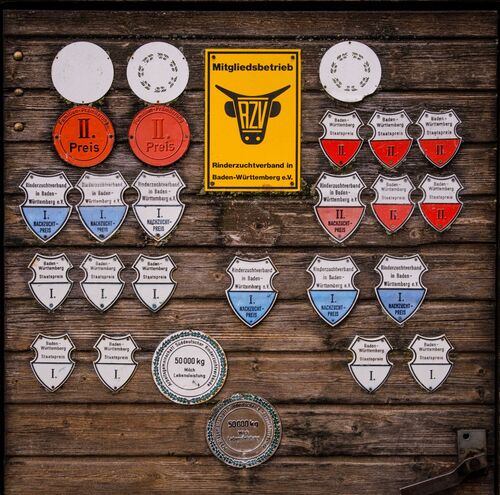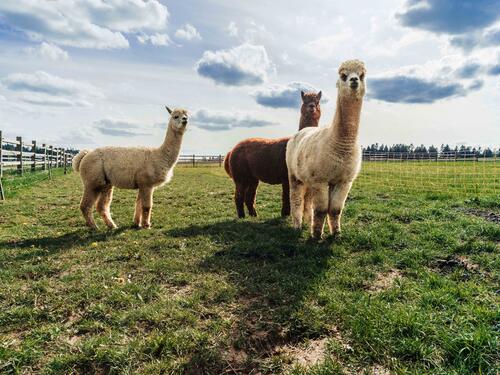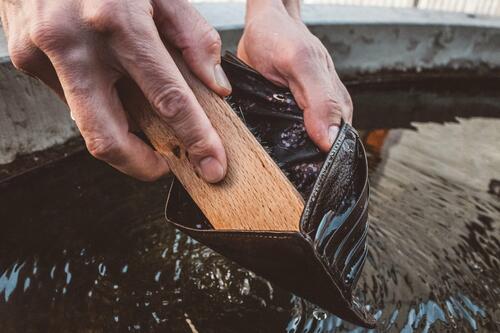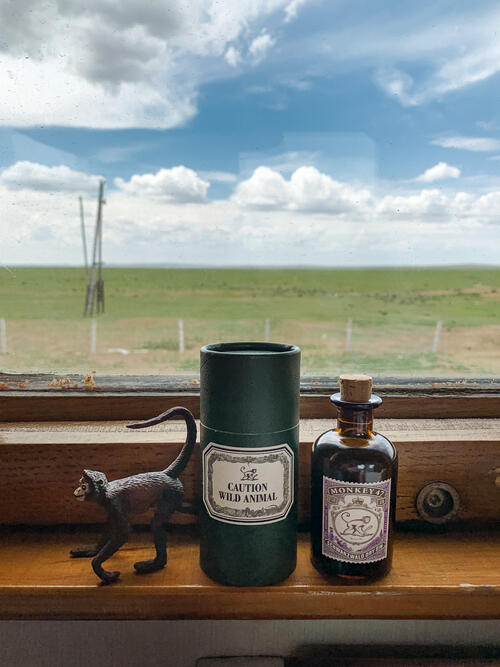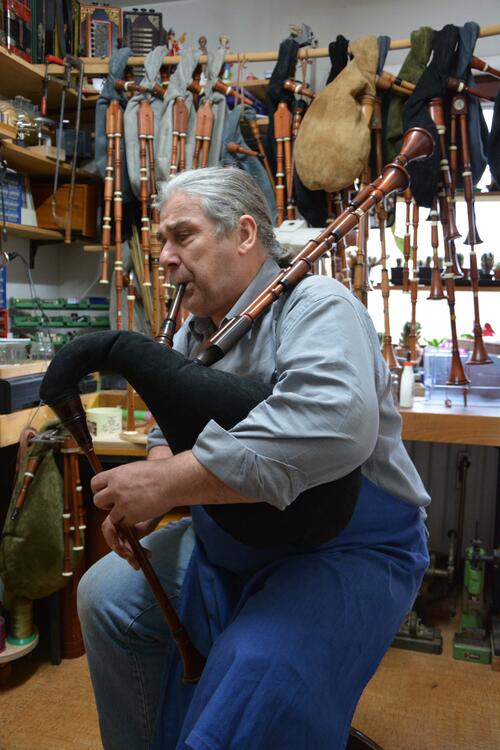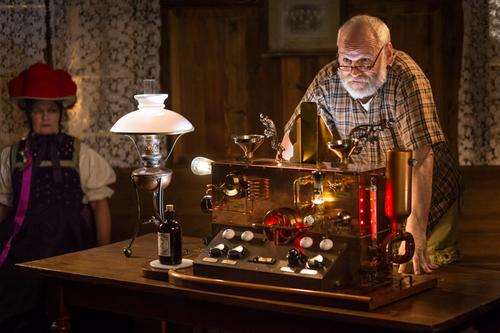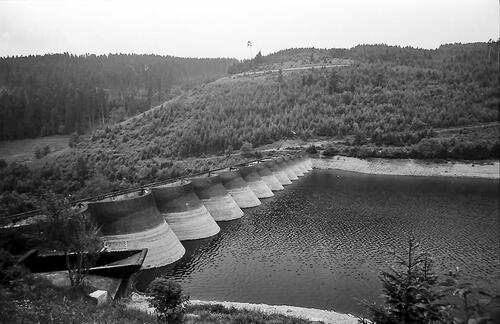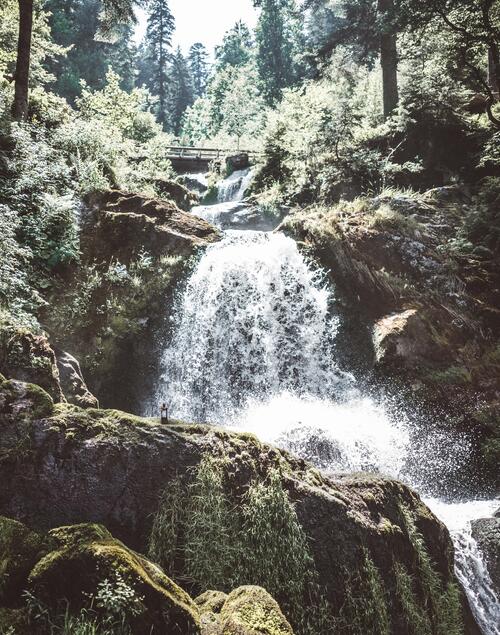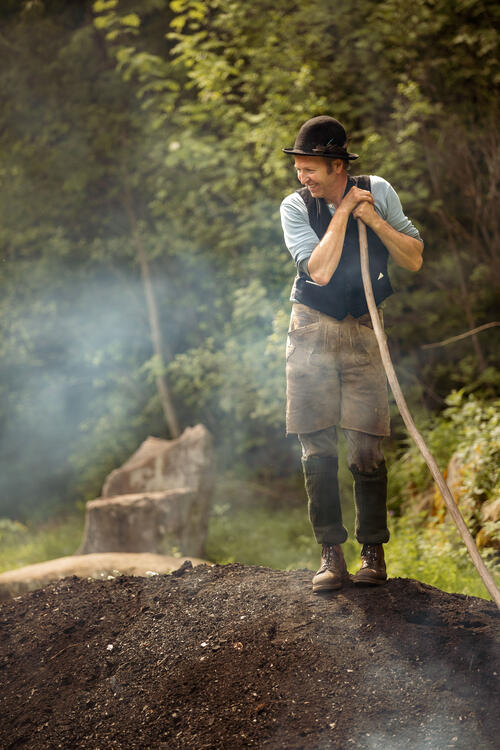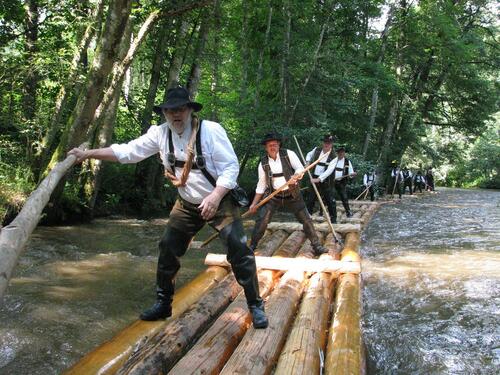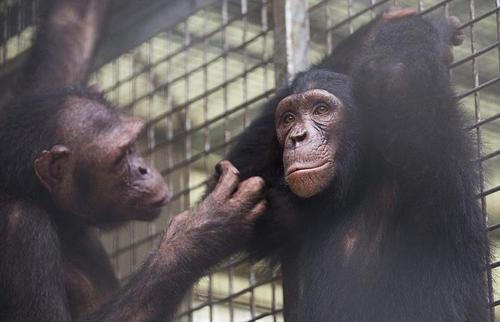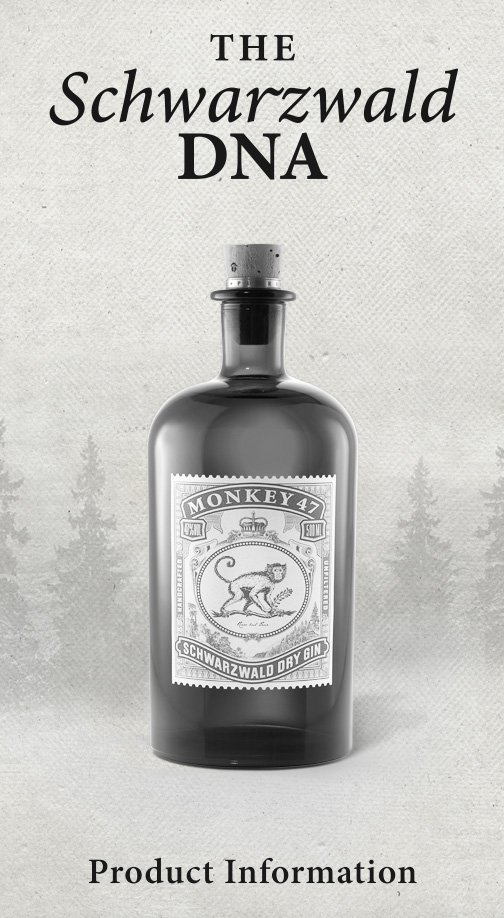Woman of the country
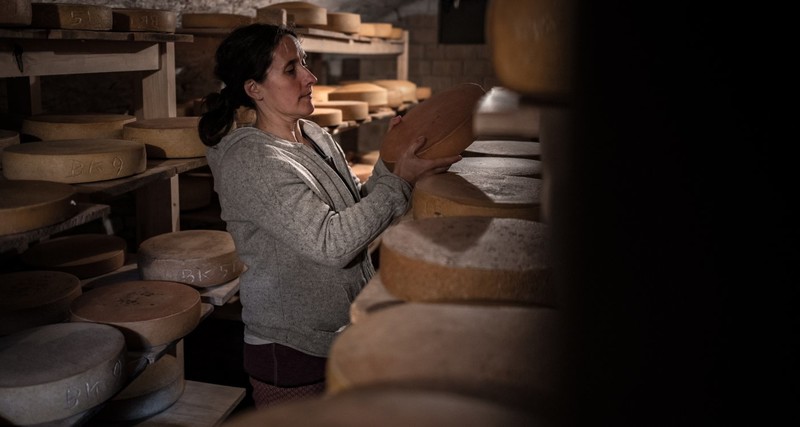
Deep in the Black Forest, Cornelia Reich produces organic cheese using milk from grass-fed cows. While the local scenery could
definitely be described as bucolic, her chosen craft is hard work that requires dedication and a willingness to compromise.
Loßburg – 24 Höfe, County Freudenstadt. In surroundings like these, you can’t help but think that this must be how Americans picture Germany: lush greens and azure blues like something out of a film homage to one’s native country. Verdant meadows stretch like a soft carpet across softly rolling hills. Cows graze lazily near apple trees heavy with fruit. Here and there, your eyes can pick out small houses and noble farmsteads; from a distance, it’s a bit like looking upon the miniature landscape of a model train layout. Dark-green forests of spruce and fir frame the scene all the way to the horizon. A single road winds its way at sharp turns through this Black Forest idyll, practically daring motorcycle enthusiasts to take a chance. It does make the perfect racetrack, actually – at least until the next tractor, timber lorry, or milk float appears up ahead.
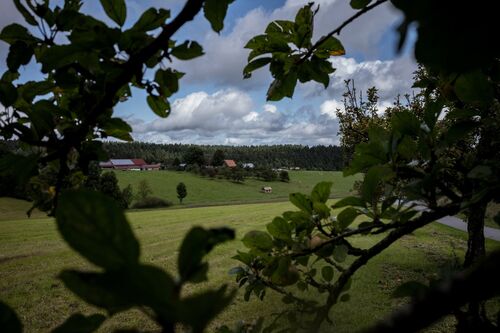
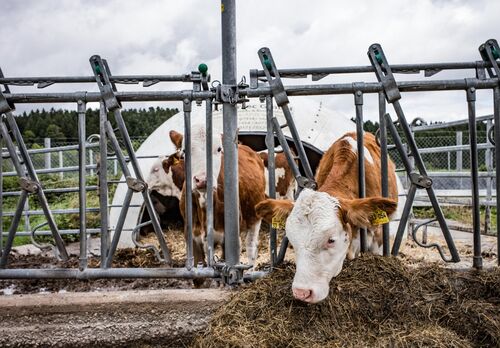
24 Höfe is what they call a dispersed settlement: Its 13.6 square kilometres are shared by some 300 local citizens, along with quite a few more cows. This is also the place where Black Forest Distillers makes its Monkey 47 gin. Before some bureaucrat coined the rather dusty term “dispersed settlement”, 24 Höfe was an association of the Höfe auf den Bergen (simply “the farmsteads on the mountains”). That’s almost 200 years ago now. One of the oldest farmsteads in the area is the Schwenkenhof, which was once known as the Edelmännischer Trollenberg. A corresponding sketch drawing now in the possession of the main state archive of Stuttgart dates back to the year 1591. This is where Cornelia Reich lives with her family, 130 cows, a handful of chickens, and eight pigs. The storied farmstead was also home to her parents and grandparents. With the arrival of the latest generation, things started to change.
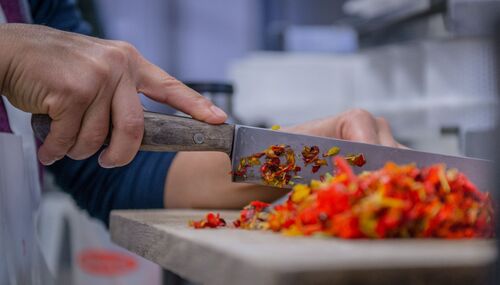
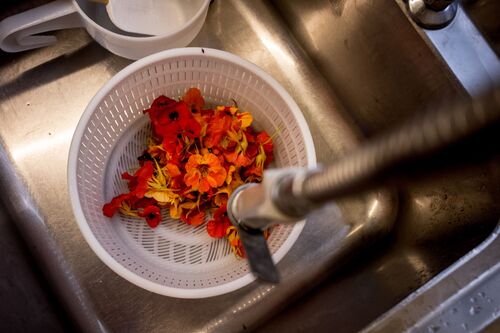
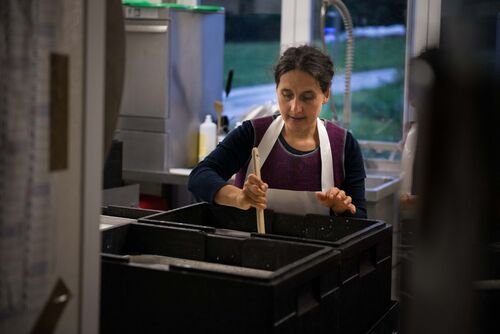
Cornelia, sporting wellies and a white plastic apron that reaches almost to the floor, stands near a huge copper vessel filled with milk. The soles of her boots smack and squish on the tiles as she makes her way through the crowded creamery. Rather delicate in stature, Cornelia almost disappears behind the massive equipment on hand. She balances on one leg as she fishes a canister, and then a measuring pitcher, out from behind the dishwasher. Everywhere you look, large metal tubs sit in black coolers, filled to the brim with milk. “On Tuesdays, I make curd and cream cheese. I’ve already put the rennet in the pasteurised milk curd,” Cornelia explains in her thick Swabian accent, pointing to the copper vessel. “Today, we’re making vegetarian cream cheese.” She fills the measuring pitcher with a clear, yellowish fluid and divides it among four of the tubs. Rennet is an enzyme found in the stomachs of calves that starts the curdling process when making cheese. Strictly speaking, most types of cheese are not vegetarian. It appears that this booming trend has made it all the way to rural southwest Germany. “So, that’s going to need about 45 minutes,” Cornelia says. She pauses: “By the way, do you understand how I talk? When I was picking herbs yesterday, I kept telling myself: Conni, you’ve got to speak slow – nice and slow!” (Author’s note: Cornelia’s statements have been revised slightly so as not to butcher her delightful dialect – and, yes, so readers can actually understand.)
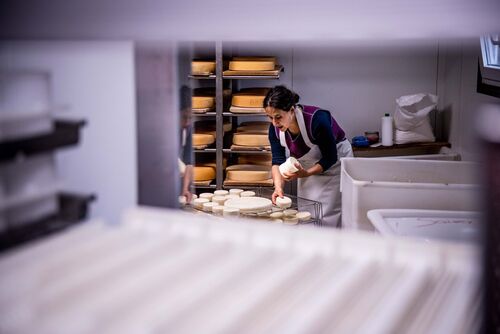
“The herbs all grow around here,” she continues as she pulls out a small basket of bright orange nasturtium. For her wild herb cream cheese, Cornelia has also gathered ground elder, garlic mustard, yarrow, watercress, and wild carrot blossoms. She gives them all a good rinsing and shakes them dry before disappearing again behind the cooler boxes. Clanging and banging can then be heard from the adjacent room. Through the wall, Cornelia reports that the milk for the vegetarian cheese has already been pasteurised. She returns with two large metal sheets. “The raw milk comes through this hose straight into the vat. We’ll keep it at 24 degrees for 24 hours; then I can work on the curd cheese tomorrow,” Cornelia explains as she hoists a heavy lid onto the copper vessel. She moves a bit like an ermine, darting here and there without bumping anything in spite of the cramped quarters. She works quickly and knows exactly where everything is. Cornelia’s slight frame also makes the tools of her trade look much larger than they actually are. Out of nowhere, she produces a large, heavy wooden board. Compared to her arm, it looks as big as a tennis racket, and the knife that comes with it resembles a machete. As she chops up the herbs, she reveals that none of this was really part of the plan.
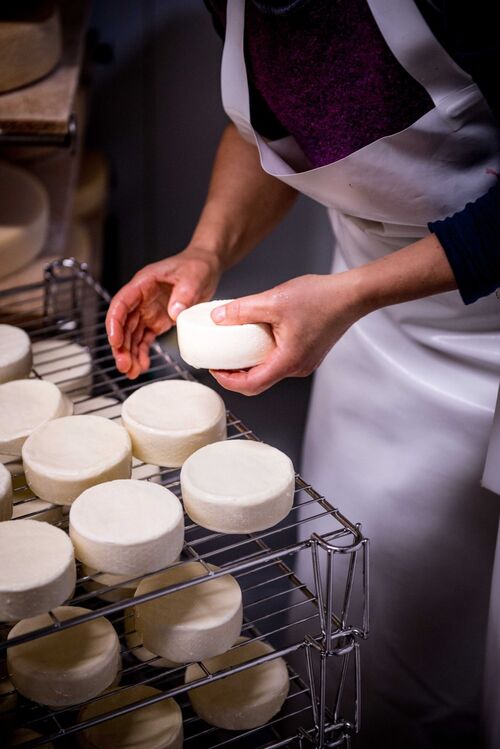
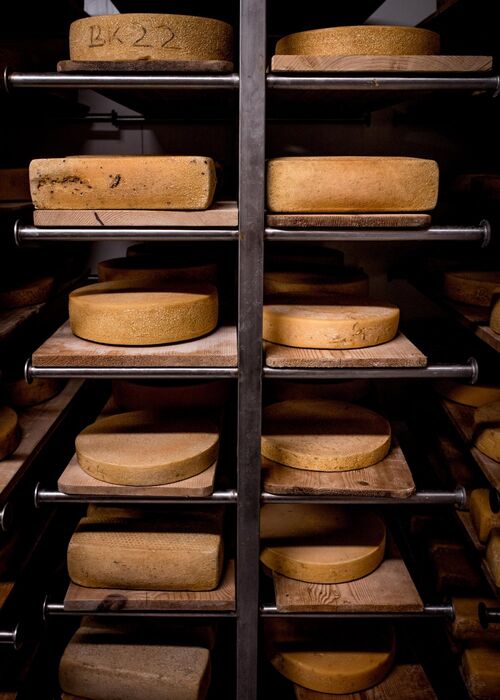
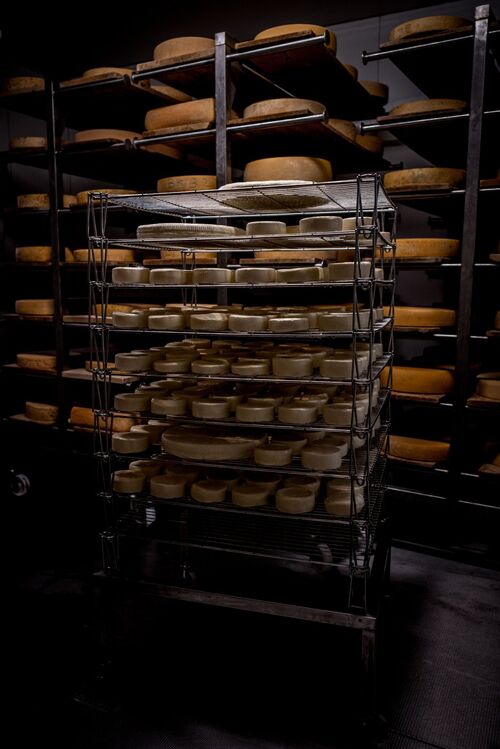
Cornelia – or just Conni, as we’re allowed to call her after the renneting process – is the youngest of four sisters. She originally wanted to become a physical therapist, but after watching her sisters leave the farm one by one, she followed her sense of duty and decided to learn the family trade. Perhaps this is why Conni doesn’t wax romantic when talking about her farmstead. The alarm goes off at five in the morning, seven days a week. Since someone always has to be around to look after the place, going on holiday is basically impossible. The decision to get into farming also went hand in hand with living under the same roof as her parents … day after day. Conni recounts this story not with bitterness, but with the requisite sincerity. “You either weather the storm or you don’t,” she says simply. “Either way, the important thing is that you face it and take a chance.” From Conni, this doesn’t sound like a trite motivational poster or an advert for starting a new career in sales; it sounds authentic. Her eyes sparkle as she minces the nasturtium with her knife. Making cheese is something she learned in Switzerland, where an eight-week placement was enough to plant the seed of someday starting her own cheese dairy in her head. Before that, she also spent several weeks as a trainee at a farm in New Zealand. This is dangerously close to treason by Swabian standards, but her parents nevertheless saw fit to sign the farmstead over to her when she was 26.
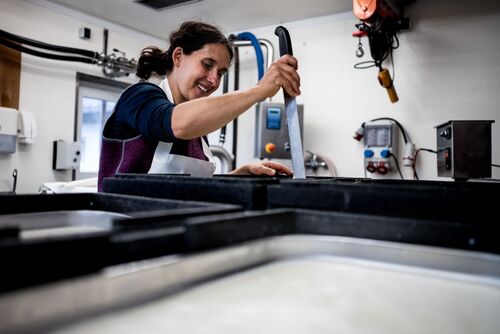
“I’d better get the camembert out of the brine,” Conni says before squishing her way into the cold room. The aroma of red smear and the finest mature cheese hangs in the air. On both sides of the room, the shelves are neatly stacked with yellow wheels. Conni fishes the camembert out of a large white tub and places them on a metal rack. “Mondays I make camembert and semi-soft cheese, Tuesdays cream and curd cheese, Wednesdays yogurt, and Thursdays more cheese. On Fridays, I’m at the market by 6:30, and then I mind the store here at the farm in the afternoon. On Saturdays, I have to get to the market by four to get a stand, and Sundays are for sorting out the stalls.” She moves to the next rack. “I prepare cheese in the morning and attend to different upkeep tasks starting in the afternoon. When the humidity is high, for example, I have to rinse the semi-soft cheeses off with brine every day because the risk of mould is so high.” Another rack. “My biggest dream would be to keep working with my own cultures. I got the cream cheese we now make here from a customer.” And another. “She told me about an elderly woman in the southern Black Forest who made the cheese, but was getting ready to retire. That would have been the end of the cheese, so I paid her a visit.” Conni slides the stacked racks of camembert onto the shelves, dusts off her hands, and continues as she disappears into the second cold room. “It’s time for the secret ingredient: my own cultures,” she declares.
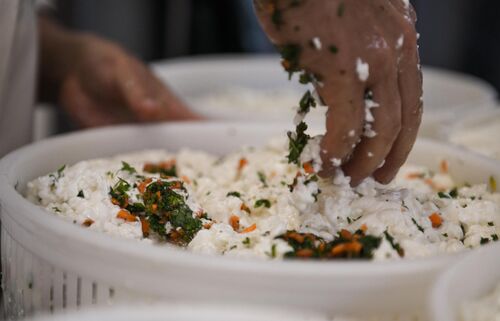
Then comes the admission: “Ok, you got me – it’s just yogurt.” As she happily carries on explaining the process, she spoons the yogurt into the metal tubs and stirs the now-curdled milk with noticeable care. She uses an even bigger knife to cut through the substance, which they call “breaking the curd”. “For raw milk cheeses, I use the harp. The harder you want the cheese to be, the smaller you’ve got to break up the curd,” Conni reveals. She spreads cheese baskets of different sizes across a drained working surface and begins filling them with the broken curd. The sound of whey pattering on the floor fills the room. “We didn’t want to just throw all the whey out, so we got pigs. Whey and grist is all we feed them. We sell a bit of sausage and other meat as well,” Conni adds, dividing the curd among the baskets with a certain grace and serenity. Using her hands, she kneads the clumpy white mass until it turns into a dense, doughy substance. She then sprinkles the herbs she has prepared among the baskets and works them into the cheese. As the room’s increasing humidity begins to form on the windows, the pattering of the whey is the only sound. There is something quite meditative about watching Conni go about her work. After spreading sheets of rough linen over her working surface, she begins covering them with portions of freshly made cheese. She then reaches for a hose and uses its hot water to rinse the whey out of the cheese – the start of what one might call Swabian mozzarella.
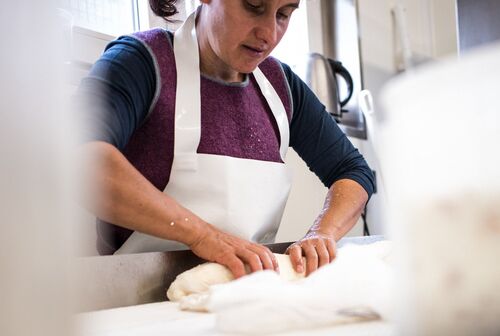
Conni proceeds by plunging her bare hands into the hot mass of cheese, wrapping it up in the linen to form thick lengths, and squeezing the liquid out of them. “These’ll get salted tomorrow, and some of them we’ll put in oil,” she says. Her face is now flushed, and a few strands of damp hair hang across her forehead. “We didn’t build our cheese dairy until 2012. I started out with cooked cheese – first a litre, then five, and then 10. A bit more every year.” In cooked cheese, Conni is referring to a very old and traditional method of production in which milk is heated and then curdled using lemon juice. “I made some baskets out of old yogurt cups and used some weights from my father’s distillery for the pressing. It was all very ad-hoc,” she admits. Conni’s operation has come a long way since then. Cheese has grown from a mere sideline to a significant item on the farmstead’s balance sheet. Of its 130 cows, 16 are fed grass and milked separately for cheese production. The entire farmstead is certified organic, which is still rare in Loßburg. “In the beginning, I had to deal with a lot of envy and resentment. Some were hoping for the business to fail,”
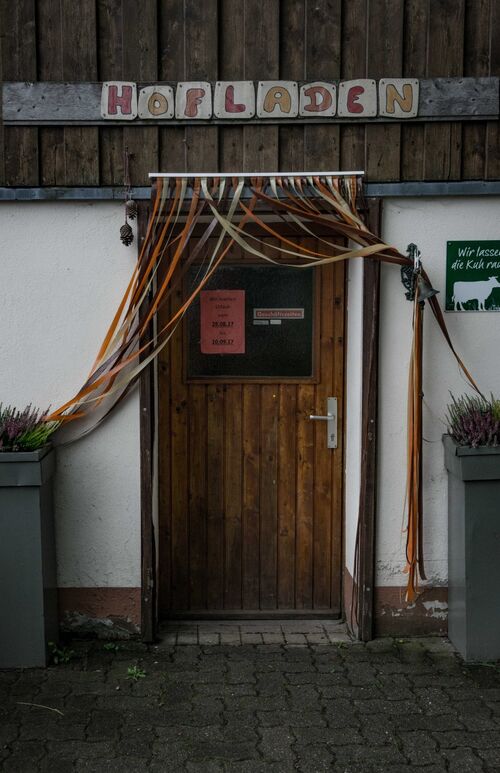
Connie recalls. “Around here, it’s quite hard to win people over with something new.” She and her husband – Jürgen Saile, an agricultural engineer from nearby Horb – seem to live at the intersection of two worlds. In the realm of traditional agriculture, their organic farm and cheese dairy make them exotic outsiders; elsewhere, they’re seen as salt-of-the-earth peasants who let their children walk a kilometre to the next bus stop no matter what the weather. This is another of the many reasons why Conni doesn’t romanticise her trade. Of course, the taste of her handmade cheese contains nary a trace of such trials. Quite the opposite: The roasted walnuts and coriander seed in her slightly tangy winter cheese conjure images of lush green meadows, and her Blümli tastes of long summer nights. Before we say goodbye, Conni says something that reflects her personality better than anything she’s related so far. “When I get back from the market after being surrounded by noise, people, and all that commotion for an entire Saturday, the first thing I do is go milk the cows. The calmness of the animals has the same effect on me, and it helps me unplug. For me, that’s peace.”
